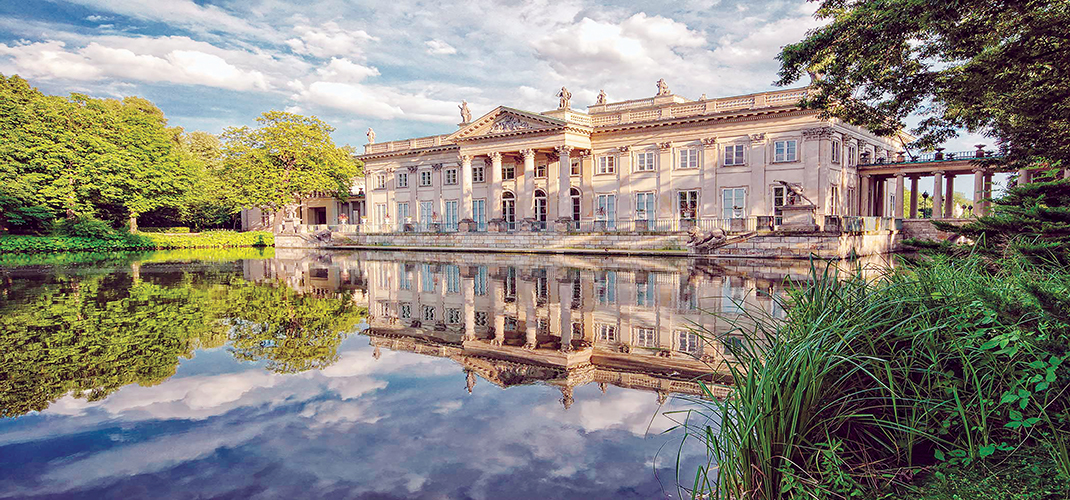Poland

The Republic of Poland has become one of the most visited destinations in Europe, with its history, Gothic Cathedrals, salt washed Baltic Beaches, Mountains, Rivers and Lakes. Warsaw the capital has an energetic urbanisation, which mixes with its historical past. The picturesque UNESCO city of Kraków has stunning Gothic Cathedrals, the Kazimierz Jewish Quarter and the great medieval Market Square, winding cobblestone alleyways and St. Mary’s Basilica. Just over an hour away Auschwitz-Birkenau is perhaps the single most emotional and sobering reminder of the horrors of the Nazi regime in Europe. With exhibits that chronicle its rise to a death camp and the atrocities visited upon the minorities within, it has become not only a museum but a memorial to the Holocaust and the destruction of the European Jews and something not to be missed.
Situated on the Baltic Coast, Gdańsk is now one of the biggest visitor destinations. The city has several historical sites including the Royal Way, a famous promenade, which runs from the Old City Gate to the Motlawa River leading to the Old Town, once famous for the Polish Kings who paraded along its entirety when visiting the city. Some of the other major sites along the Royal Way include the Golden Gate, the Prison Tower, the Torture House and the 17th Century Neptune’s Fountain, a bronze statue of a sea god. Ulica Mariacka is one of the most beautiful streets in Gdansk’s Old Town with shops and plenty of trendy cafés. In the centre of town is the Dlugi Targ (Long Market). Reconstructed after WWII, this beautiful area is now a major tourist attraction with long colourful facades, shops, restaurants and is also the home to for the worlds amber trade where you can window gaze into the many amber jewellery shops. The 17th Century Golden House can also be found on Dlugi with is opulently ornamented facade displaying 12 elaborately carved historical scenes. About an hour away from Gdańsk is the 1406 Malbork Castle with its high walls and spikey turrets, great bulwarks and gatehouses. It was the largest brick fort in the world and was used by the Teutonic Knights and the rulers of Prussia for centuries. It has some of the most enthralling medieval relics to explore.
The vibrant university city of Poznań is located on the Warta River. The city has four large lakes within its borders and nearby is the Morasko Meteorite Reserve and the Wielkopolska Natural Park. The beautiful Old Town Market Square has Renaissance style buildings and 16th Century merchant houses. The Town Hall is home to the 10th Century Historical Museum of Poznań and the Gothic and Baroque Saints Peter and Paul Cathedral is built on Ostrów Tumski Island. Other sites to visit include the Imperial Castle once home to Kaiser Wilhelm II, now a cultural theatre, the Ethnographic Museum specialising in Polish folk costumes and the Museum of Musical Instruments.
For those who are nature lovers, the town of Zakopane is nestled right next to the Tatra National Park. Zakopane is a great base for hiking throughout the area and where there are abundance of trails to discover. Zakopane has its own very distinctive style of architecture known as Podhale, with rounded wood windows and very distinctive details embellishments, which can be seen throughout the city centre. One of the most beautiful areas to visit while in the Tatras is Lake Morskie Oko or the ‘Eye of the Sea’. Standing at 862 metres in length it is the largest in the Tatras. These shimmering mountain lakes and valleys of the Tatra Mountains will not fail to take your breath away.
A visit to Częstochowa has both a religious and historical significance. The city is known for the famous St. Paul’s Monastery of Jasna Góra, which houses the Black Madonna painting, a shrine to the Virgin Mary. Millions of pilgrims flock every year from all over the world to pay homage to the shrine. The painting is said to have miraculous powers and is one of Jasna Góra’s most precious treasures.
Located on the Oder River, Wroclaw‘s Old Town is spread over a series of islets, connected by a number of arched bridges to the cobblestone streets of the Salt Market Square. Wroclaw’s charm is quite literally understated, with its romantic Hansel and Gretel houses, St. Elizabeth’s Church, the 13th Century Market Square lined with elegant townhouses, medieval Gothic Old Town Hall and large Astronomical Clock to the nearby Panorama of Racławice Art Gallery. Known locally as Krasnale, the Wroclaw dwarves are small bronze sculptures and figures from fairytales, which can be seen dotted everywhere around the city. Other sites to visit include the Old Town, the 14th Century Parish Church of St. Mary Magdalene, the White Stork Synagogue built in 1829, the 10th Century Ostrów Tumski, the Gothic Cathedral of St. John the Baptist and the 1977 Monument of an Anonymous Passerby. Across the River you can visit the UNESCO World Heritage Listed Centennial Hall with its giant dome and tall spire or enjoy the Multimedia Fountain in Szczytnicki Park, powered by 300 water jets and 800 lights. In the evening come and enjoy the wonderful displays of geysers, water mists and spurts all enhanced by music.
